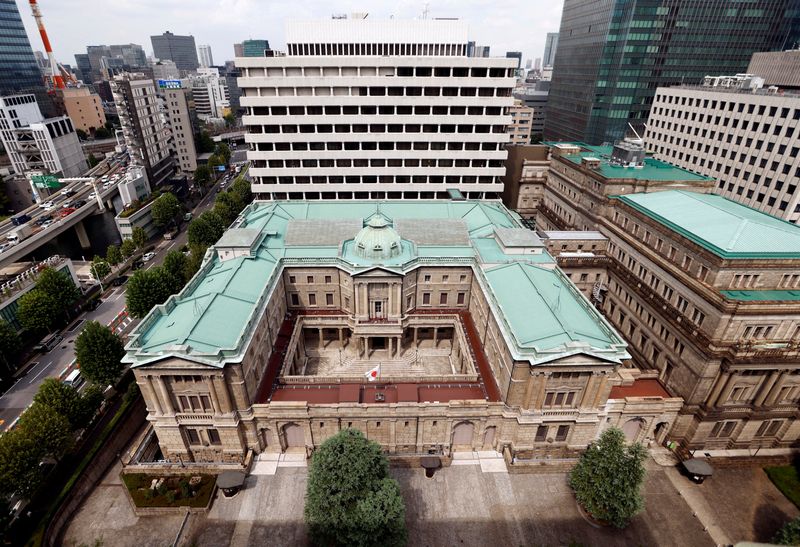By Leika Kihara
TOKYO (Reuters) - Bigger-than-expected pay hikes by major Japanese firms have significantly heightened the chance the central bank will end eight years of negative interest rate policy next week, marking a landmark shift away from its huge stimulus programme.
Internal preparations for an exit have been in the works since Kazuo Ueda took office as BOJ governor in April last year, and were mostly done by year-end, say sources familiar with the bank's thinking.
BOJ officials, including Ueda, have recently stressed the timing of a shift away from negative rates would depend on the outcome of this year's annual wage negotiations between workers and employers.
Annual labour talks with major firms ended up with pay raises of 5.28%, the country's largest union group said on Friday, the highest in 33 years and far exceeding private forecasts for a hike of around 4.5%.
The results, which heightened hopes that rising pay will revive stagnant household spending, cemented the chance of an exit from negative rates at the BOJ's two-day meeting ending on Tuesday, analysts say.
"Given the stronger-than-expected wage talk outcome, the BOJ will likely ditch negative rates and yield curve control next week," said veteran BOJ watcher Naomi Muguruma, chief bond strategist at Mitsubishi UFJ (NYSE:MUFG) Morgan Stanley Securities.
"The BOJ could have waited until April if the wage talk outcome wasn't this strong. But with markets already pricing in the chance of an exit, it would actually be a surprise if the bank forgoes ditching negative rates next week," she said.
If the nine-member board believes the conditions are right, the BOJ will set the overnight call rate as its new target and guide it in a range of 0-0.1% by paying 0.1% interest on excess reserves financial institutions park with the central bank.
Upon exiting its negative rate policy, the BOJ will also ditch its bond yield control and discontinue purchases of risky assets such as exchange-traded funds (ETF), sources have told Reuters, putting a formal end to the radical monetary experiment of former Governor Haruhiko Kuroda in place since 2013.
A poll taken in March showed 35% of economists expected the BOJ to end negative rates at the two-day meeting ending on Tuesday, up from the previous month's 7% but still below 62% projecting such action at its subsequent meeting on April 25-26.
With an end to negative rates seen as nearly a done deal, the market's attention is shifting to any clues the BOJ could give on the pace of any interest rate hikes thereafter.
Ueda has said the central bank will maintain accommodative monetary conditions even after ending negative rates, and avoid causing any "discontinuity" from the current ultra-loose policy given uncertainty over the economic outlook.
Any guidance on the future policy path that the BOJ could offer upon ending negative rates will likely be in line with such comments, sources have told Reuters.
Under previous Governor Kuroda, the BOJ deployed a huge asset-buying programme in 2013 aimed at reflating growth and firing up inflation to its 2% inflation target in roughly two years.
The central bank introduced negative rates and yield curve control (YCC) in 2016 as tepid inflation forced it to tweak its stimulus programme to a more sustainable one.

However, last year, as the yen's sharp falls pushed up the cost of imports and heightened public criticism over the cost of Japan's ultra-low interest rates, the BOJ tweaked YCC to relax its grip on long-term rates.
An end to negative short-term rates would be Japan's first interest rate hike since 2007.